Gochujang Pasta
Elevate your pasta game with this Korean-inspired fusion Gochujang Pasta! Rigatoni, shrimp and mushrooms adorned in a velvety Gochujang-infused cream sauce. Ready to impress in just a few simple steps and less than 15 minutes!

As a busy mom, finding a quick and satisfying meal on a weeknight is a game-changer. My go-to lifesaver? This creamy Gochujang shrimp and mushroom one pot pasta! The simplicity of tossing everything into a single pot not only saves me on cleanup but ensures a flavorful dinner in no time. A delicious pause at the end of a busy day.
Why You’ll Love This Pasta!
- Flavor Fusion: Experience the best of both worlds with a harmonious blend of Italian and Asian flavors, thanks to the bold kick of Gochujang.
- One Pot Meal: Simplify your evenings with this one pot meal. Throw together the ingredients, let them mingle in the pot, and in less than 15 minutes, you have a gourmet-level meal without the hassle of multiple dishes.
- Weeknight Hero: Perfect for busy weeknights when time is of the essence. It’s a quick and delicious solution for those days when you need a satisfying meal without sacrificing precious time.
- Customizable Options: Whether you prefer it spicier, creamier, or with additional veggies, the recipe offers flexibility to cater to your taste preferences, making it a versatile choice for everyone.
- Family-Friendly: Loved by all ages, it’s a family-friendly dish that satisfies even the pickiest eaters with its rich and flavorful combination of ingredients.
Gather These Kitchen Tools
- Measuring Cups and Spoons
- Large Pot
Ingredients and Substitutions
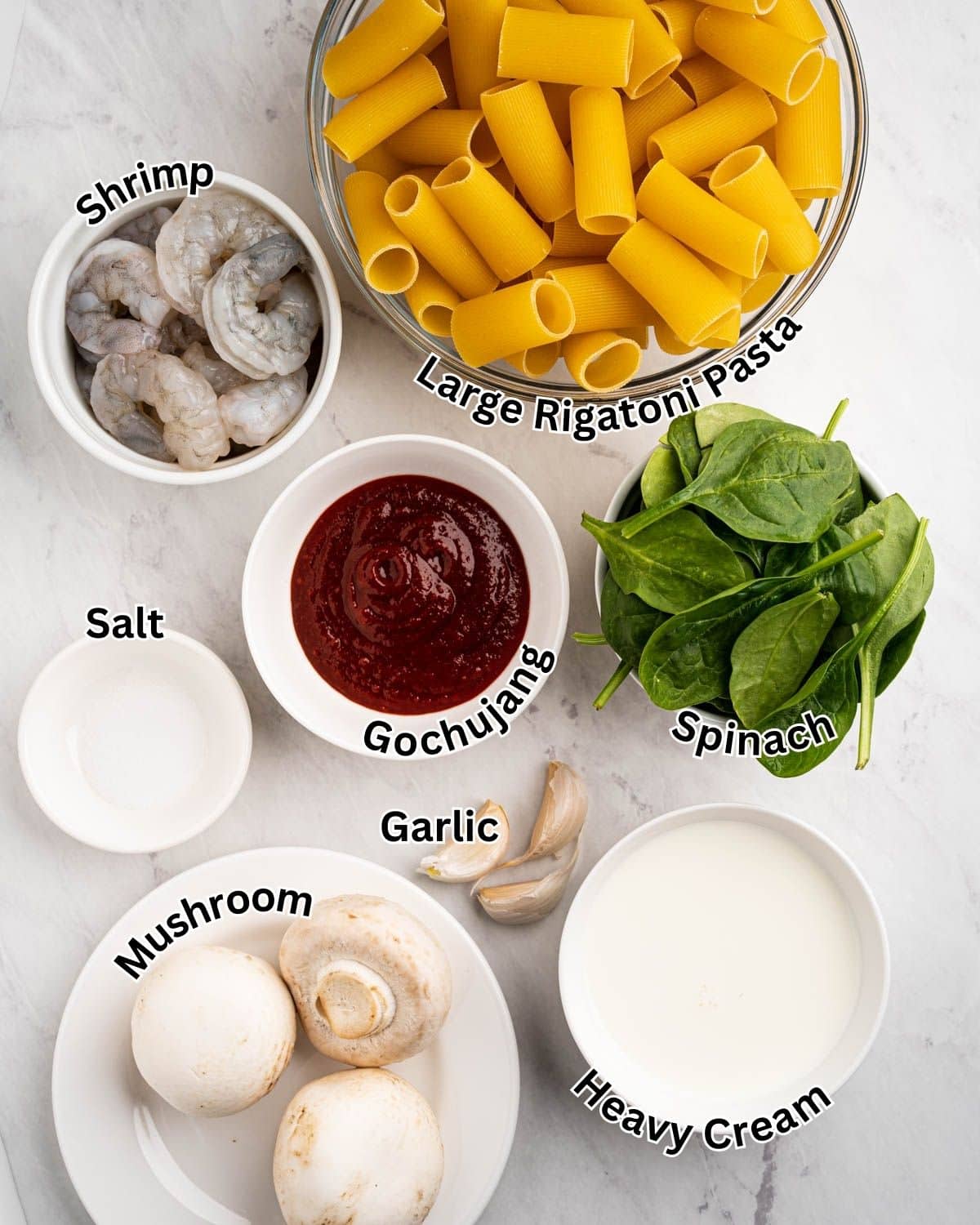
Please scroll ⬇️ to the recipe card to see the full ingredient amounts and instructions.
Large Rigatoni Pasta: The robust texture of large rigatoni pasta complements the bold flavors of Gochujang sauce, providing a satisfying bite and ensuring the sauce adheres beautifully to each piece. Use rigatoni or any other pasta shape, such as penne, fusilli, rotini, or fettuccine.
Shrimp: Shrimp adds a seafood element pairing perfectly with the spicy and savory notes of Gochujang. You can substitute it with chicken or beef.
Mushrooms and Spinach: Earthy mushrooms introduce depth and umami. Spinach adds a pop of color and brings a subtle freshness to balance the dish. The addition of veggies makes it a true one pot meal! You can substitute it with any other vegetable of your choice.
Garlic: The aromatic presence of garlic elevates the entire dish.
Gochujang (Korean Chili Paste): The star of the show, Gochujang, contributes a unique blend of heat, sweetness, and fermented depth, creating a distinct and unforgettable flavor profile for the pasta. If you don’t have gochujang or want to play around with the flavors, you can use a gochujang substitute such as ssamjang or sriracha.
Heavy Cream: Heavy cream adds a luxurious creaminess to the sauce. Some other great alternatives are coconut milk, whole milk, or half and half. For a tangy twist, you can use Greek yogurt.
Salt: Added to the boiling water while cooking the pasta to season the pasta.
Cooking Oil: Used to saute the mushrooms and shrimp so that it doesn’t stick to the pan.
Let’s Make Some Gochujang Pasta!

Step 1: Bring a large pot of salted water to a boil. Cook the rigatoni pasta according to the package instructions until al dente. Drain and set aside.

Step 2: In a large skillet, heat the avocado oil over medium heat. Add the minced garlic and sliced mushrooms, and sauté for 1-2 minutes until the mushrooms start to soften.
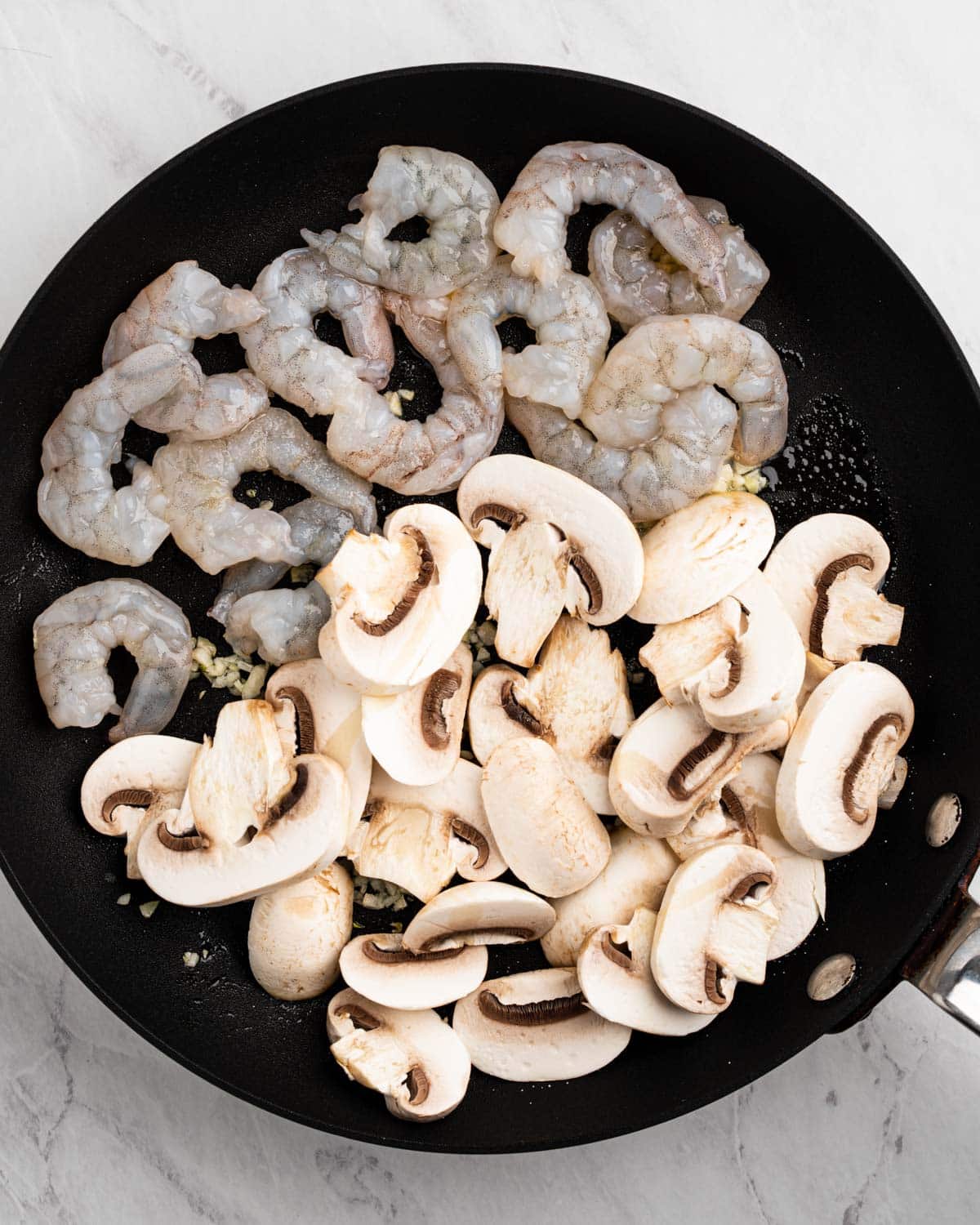
Step 3: Add the shrimp to the skillet and cook until they turn pink and opaque, about 2-3 minutes per side.
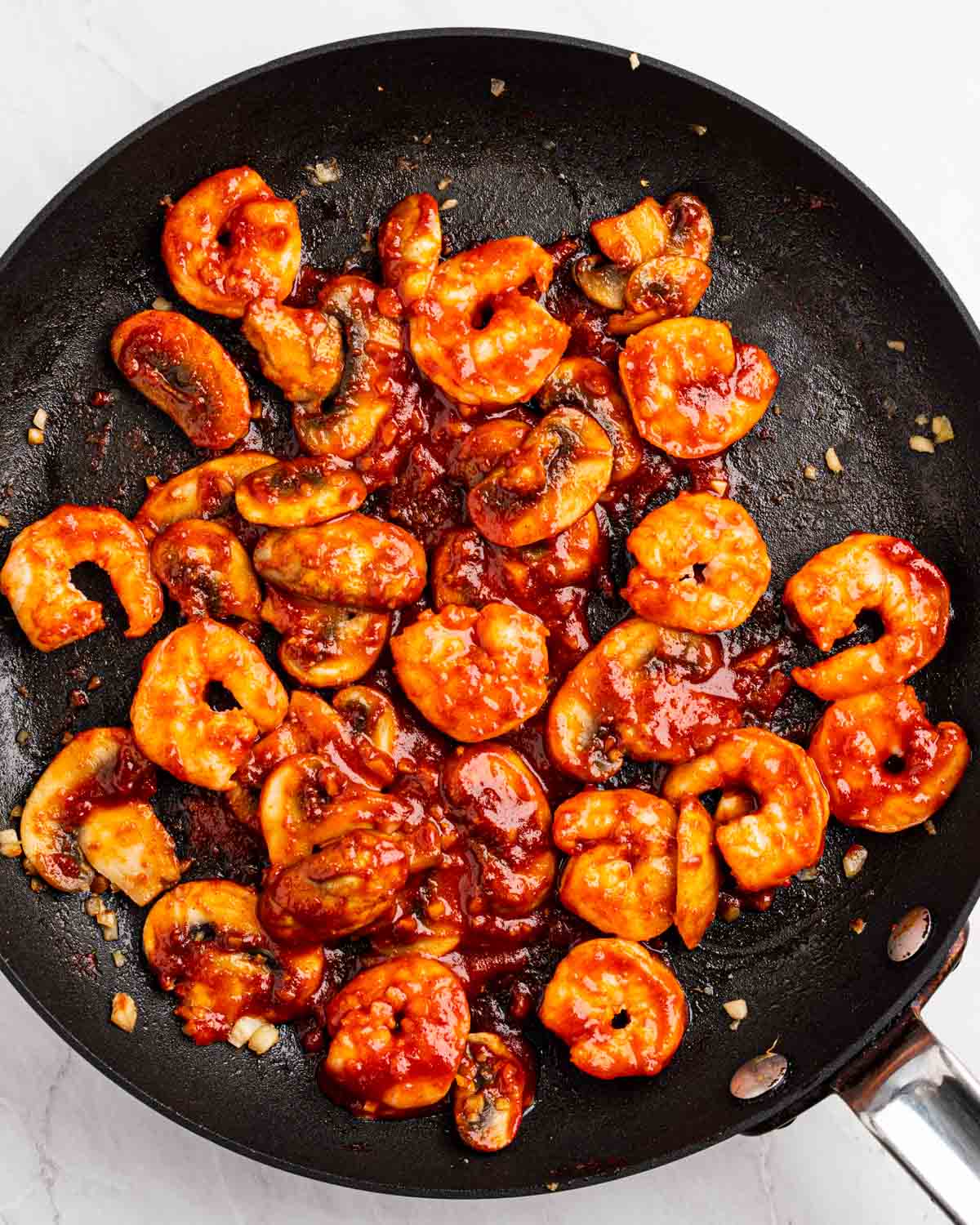
Step 4: Stir in the gochujang and heavy cream, stirring until the ingredients are well combined and the sauce is heated through.

Step 5: Toss in the cooked rigatoni pasta, ensuring it’s evenly coated with the sauce.

Step 6: Finally, add the fresh baby spinach to the skillet and toss until the spinach wilts slightly.
Serve the Gochujang pasta hot, garnished with cheese if desired.

Recipe Tips
- Cook the pasta until al dente. Boil the pasta until it’s al dente, as it will continue to cook briefly in the sauce. This ensures the pasta maintains its texture and doesn’t become overly soft.
- Balance the level of heat. Gochujang can vary in spiciness, so taste and adjust accordingly. If you prefer a milder dish, start with a smaller amount and add more gradually.
- Sauté the shrimp and mushrooms separately: Sautéing shrimp and mushrooms separately allows them to release their moisture before adding them to the sauce, preventing the dish from becoming watery.
- Add fresh spinach at the end. Add fresh spinach towards the end of cooking to maintain its vibrant color and prevent overcooking. The residual heat from the pasta and sauce is often sufficient to wilt the spinach.
- Experiment with the protein. While shrimp is a fantastic choice, feel free to experiment with other proteins like chicken, beef, or even tofu to personalize the dish to your taste preferences.
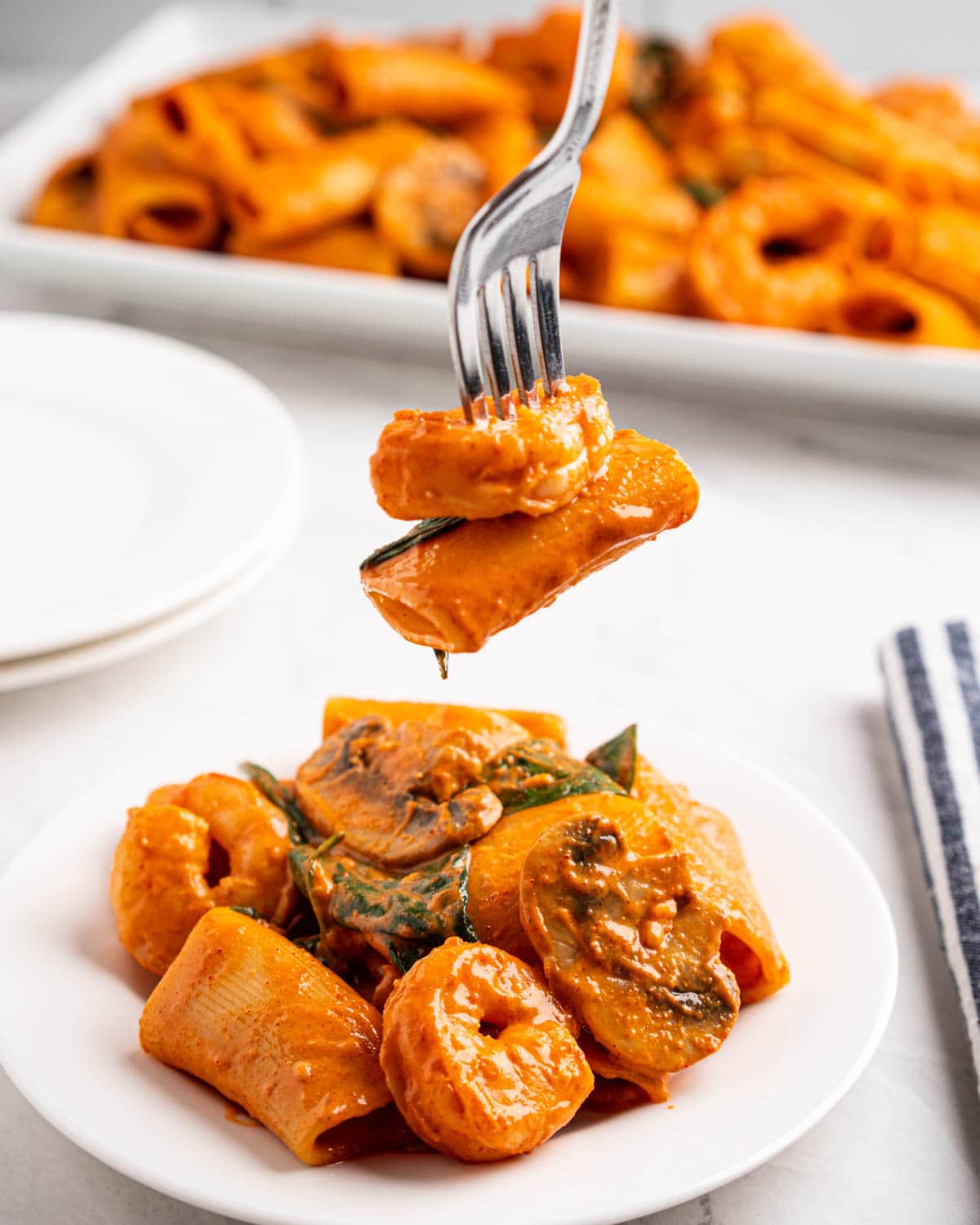
Frequently Asked Questions
Gochujang has a complex flavor profile that is both spicy, sweet, and savory. It typically offers a deep umami taste due to its fermentation process, with a noticeable heat level that can vary depending on the brand and specific recipe. Alongside the heat, you’ll often detect a slightly sweet undertone derived from ingredients like fermented soybeans and glutinous rice.
Yes, Gochujang pasta can be spicy, as Gochujang itself is a Korean chili paste known for its heat. However, the level of spiciness can be adjusted based on personal preference and the amount of Gochujang used in the recipe.
A good substitute for heavy cream is coconut milk. Coconut milk adds a creamy texture and a subtle sweetness that complements the bold flavors of Gochujang. Alternatively, you can use whole milk or half-and-half for a lighter option or Greek yogurt for a tangy twist.
You can use a variety of pasta shapes for Gochujang pasta, depending on your preference and what you have available. Some alternative options include spaghetti or linguine, penne, fusilli, farfalle, or shells.
If you’re looking to add a cheesy element, you can use mozzarella, cream cheese, parmesan, or feta.
How to Store Leftovers
Allow the pasta to cool at room temperature for no more than 2 hours. If you’re in a warmer environment, consider placing it in the refrigerator sooner.
Refrigerate: Transfer the leftover pasta into an airtight container or sealable plastic bag. Refrigerate promptly.
Use Within 3-4 Days: Consume the leftover Gochujang pasta within 3-4 days for optimal flavor and quality. Beyond this time, the texture and taste may start to degrade.
Avoid Freezing: Cream-based sauces, like those in Gochujang pasta, can separate and become grainy when frozen. It’s generally not recommended to freeze dishes with creamy sauces.
How to Reheat: When reheating, do so on the stovetop or in the microwave until it reaches a safe internal temperature (165°F or 74°C) to ensure it’s heated through.
Serving Suggestions
Enhance your Gochujang pasta by garnishing it with cheese. Add fresh cilantro, basil, or green onions for a burst of color. Add toasted sesame seeds or crushed peanuts for texture, and serve with lime wedges on the side for a zesty touch. For an extra kick, add sriracha drizzle, and complete the meal with a side of crusty bread, or garlic bread.
Serve it alongside a simple vegetable side, such as miso Brussels sprouts, Chinese garlic green beans, or spicy Korean cucumber salad.
RECIPE

Gochujang Pasta
Ingredients
- 1 pound large rigatoni pasta
- 1 teaspoon salt (added to pasta water)
- 1 tablespoon avocado oil
- 2 garlic cloves, minced
- ½ cup sliced mushrooms (baby Bella, white or shiitake mushrooms)
- ½ pound large shrimp (about 14)
- ¼ cup gochujang (adjust to taste)
- 1 cup heavy cream
- 1 cup fresh baby spinach
Instructions
- Bring a large pot of salted water to a boil. Cook the rigatoni pasta according to the package instructions until al dente. Drain and set aside.
- In a large skillet, heat the avocado oil over medium heat. Add the minced garlic and sliced mushrooms, and sauté for 1-2 minutes until the mushrooms start to soften.
- Add the shrimp to the skillet and cook until they turn pink and opaque, about 2-3 minutes per side.
- Stir in the gochujang and heavy cream, stirring until the ingredients are well combined and the sauce is heated through.
- Toss in the cooked rigatoni pasta, ensuring it's evenly coated with the sauce.
- Finally, add the fresh baby spinach to the skillet and toss until the spinach wilts slightly.
- Serve the Gochujang pasta hot, garnished with additional cheese, sliced green onions, and sesame seeds if desired.


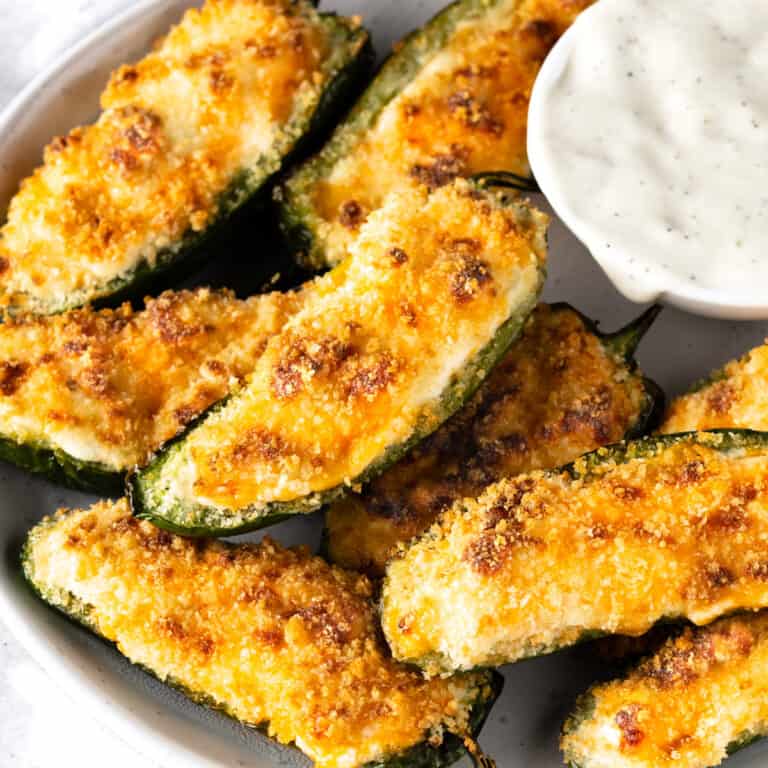

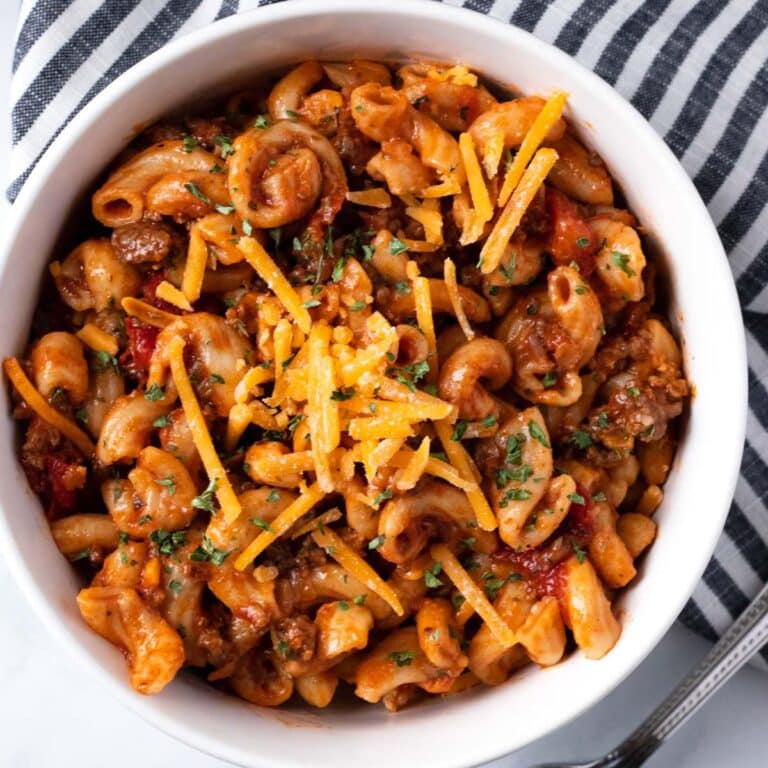


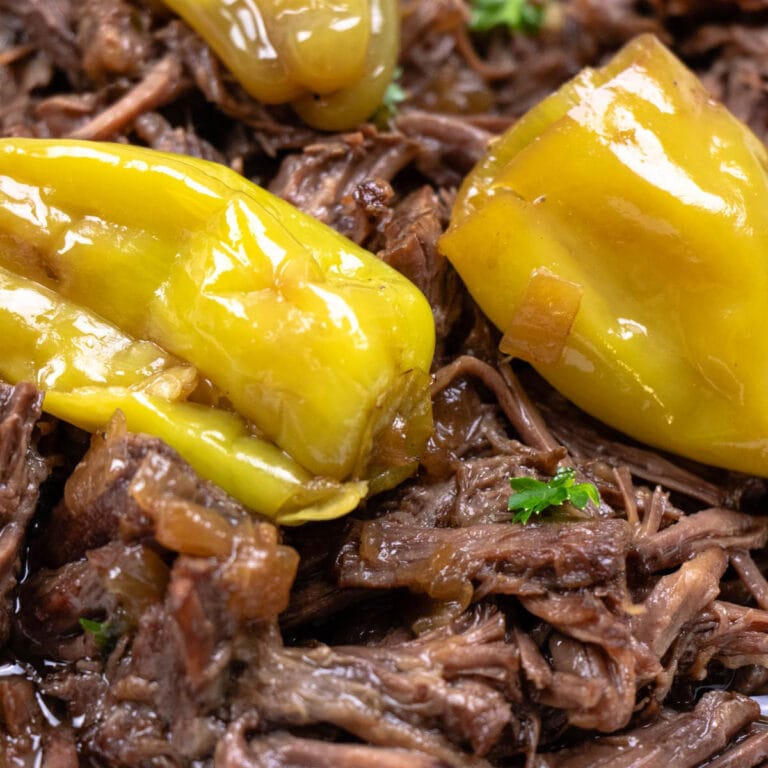
Super flavorful! I used penne pasta and it turned out perfectly. This will be my go to pasta recipe!